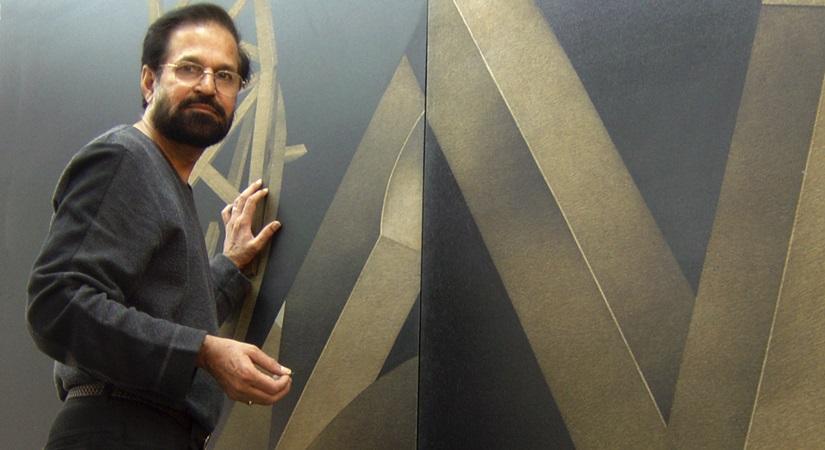Cover Story
Scaling the inward, detailing the outward

The artist, who started showing solo only after the age of 50, preferring to stick to group shows for they give people an opportunity to compare his work with others
BySukant Deepak
June 28, 2020 (IANSlife) From Portraiture to painting images of undernourished daily labourers. From the ‘Ape’ series representing the deep socio-political divide in the country to shifting his gaze inwards in the ‘Man’ series -- the fact remains that for Rameshwar Broota, considered the ‘second most successful Indian artist alive in 2020’, after Anish Kapoor, (Hurun India Art List 2020), it is important to move on. Though initially this Delhi-based artist’s work would undergo a transformation every decade, like in ‘Ape’ and ‘Man’ series, he admits that it is more frequent now.
“The moment I come face-to-face with saturation, it is the end of the series for me. No matter how successful it has been, I stop going into that direction. And I never go back, even if a buyer demands,” smiles Broota, who doesn’t take any commissioned work, refusing even museums and major art collectors.
On his ongoing digital re-presented retrospective by KNMA (Kiran Nadar Museum of Art), ‘Visions of Interiority’ that goes beyond a simple digital walk-through, with visuals, insertions of text and Broota himself talking about his technique, the artist whose work is known for scale and rich detail says, “It is an interesting effort, and frankly quite attractive. People should be able to focus.”
A pass-out of the Delhi College of Art, Broota, who has over the years been working in his unique technique that involves applying layers of different coloured paints on the canvas and then scraping away the upper layers to ‘unearth’ images recalls that this happened during his years of struggle. “I painted the colour green on a canvas and was waiting for it to dry, considering there was not enough money for more canvasses. But I just could not keep myself away from the wet canvas and was craving to start immediately. There was a knife lying in the room, with which I started to scrape off the paint. What emerged were spontaneous figures and a composition. That’s how the ‘Man’ series emerged, which got me immense recognition including several national awards.”
Talk to the artist, also known for his resin sculptures, about the fact that he prefers to produce only four or five medium-sized canvasses a year or one large-sized one in a year, and he asserts that working under deadlines does not really work for him. “As I already said, I don’t do commissioned work. Secondly, like many artists, I don’t spend the whole day in my studio or have stipulated working hours. I go near the easel when there is a strong urge.”
While there has always been a strong socio-political resonance in his work from early on, Rameshwar believes that it is never ‘intentional’, that he does not set out to give a particular message, and the process is always spontaneous. “As an artist, one keeps his eyes opened. There is never a moment when you stop observing -- both inside and outside. The moment you start working on something, a multitude of thought processes guide you towards what finally emerges.”
The artist, who started showing solo only after the age of 50, preferring to stick to group shows for they gave people an opportunity to compare his work with others, is also a photographer and would always develop negatives in his personal darkroom during the time of analog. “I believe in keeping a record of my paintings, and therefore wanted that the photography should be accurate, capturing the essence of the painting. From here developed an interest in this art form which led me to several experiments. The attitude was the same as painting -- how can I push creative limits and go beyond boundaries. When computers came into the country, I kept tuition for two months to learn Photoshop. Yes, I started exhibiting my photographs after quite a long time because I wanted to be very sure that I had given my best.”
Serving as the Head of Department at Triveni Kala Sangam in Delhi since 1967, the artist believes that the place has played an instrumental role in his life in shaping him as an artist. “Post passing out and several years of struggle, Triveni imparted a certain economic stability and environment conducive for making art. After the two-hour class, I was free to use the studio, where I made my major works.”
(This article is a website exclusive and cannot be reproduced without the permission of IANSlife)
Sukant Deepak can be contacted at sukant.d@ians.in


